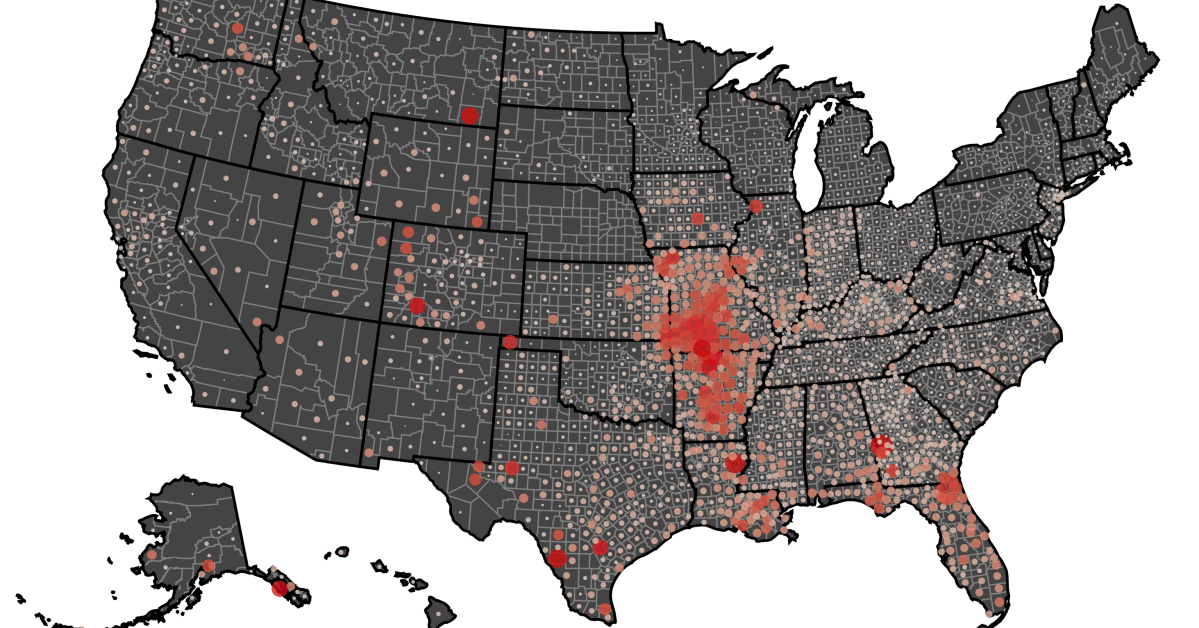You are here
ANALYSIS: A Fourth Wave of COVID-19 Is Brewing in the U.S. Is There Enough Time to Stop it?
Primary tabs
ANALYSIS: A Fourth Wave of COVID-19 Is Brewing in the U.S. Is There Enough Time to Stop it?
Mon, 2021-07-19 11:44 — mike kraft A Fourth Wave of COVID-19 Is Brewing in the U.S. Is There Enough Time to Stop it? Right now, all COVID is local Time
A Fourth Wave of COVID-19 Is Brewing in the U.S. Is There Enough Time to Stop it? Right now, all COVID is local Time With every passing day, the United States appears more likely to be on the cusp of a dreaded fourth wave of COVID-19 infections, even as the percentage of fully vaccinated Americans inches toward 50%. In the past two weeks, the number of average new daily cases has more than doubled, from 13,200 on July 4 to more than 32,300 on July 18, a surge that harbors grim reminders of the fronts of the second and third waves in the summer and fall of 2020.
But on closer inspection, this surge looks significantly different than those we have seen in the past—and may very well be worse than it looks on the page.
The coronavirus pandemic has never, even in its worst heights last winter, struck the U.S. uniformly. Instead, it has wandered from eruptions in specific urban areas to suburban and rural counties and then back again, like a persistent hurricane. Now, as the gap between states’ completed vaccination rates widens—Alabama has vaccinated just 33.7% of residents, compared to nearly 70% in Vermont—the per capita rate of new cases has clustered in a handful of regions where a majority of adults remain unvaccinated even as reopening continues apace.
... (country level map)
To draw on my amateur oceanography, the current crest resembles less a wave than a rip tide, with surges of current inundating several hotspots while the remainder of the country remains blissfully unaware (or unwilling to admit) that the pandemic is not remotely over. The upshot is that local data, rather than state- or nationwide-level figures, now paint the most accurate picture of the current state of the outbreak.
“State-wide cases don’t tell the entire story. We need a finer-toothed comb,” says Jennifer Nuzzo, the lead epidemiologist for the Johns Hopkins University Testing Insights Initiative.
As Nuzzo notes, the most recent documented outbreaks are more concentrated in rural areas than those of the worst spikes over the past 16 months (though the virus didn’t spare any corner of the country). What appears to be different now, even within more rural regions, is a blossoming of outbreaks that are at the moment highly clustered, particularly along the border between Arkansas and Missouri as well as northeast Florida and southeast Georgia.
But any such observation comes with the same caveat that we on the Numbers Beat have been striving to communicate since the beginning: The number of cases is contingent on the number of people being tested for the virus, a figure that can only underestimate the true picture, not exaggerate it. ...
“I don’t worry that we are missing the severe cases,” including when a patient is hospitalized, Nuzzo says. “It’s everybody else I worry about. We have turned our telescope to a different part of the sky.”
Murray Côté, an associate professor of health policy and management at Texas A&M University, agrees. “I still think we’re missing a chunk” of positive cases, he says. “It’s a confluence of things. We don’t have the testing facilities we used to have [earlier in the pandemic].” That chunk, both Côté and Nuzzo say, is likely made up of people who are experiencing mild or no symptoms, but can still be part of a transmission chain. ...

Recent Comments